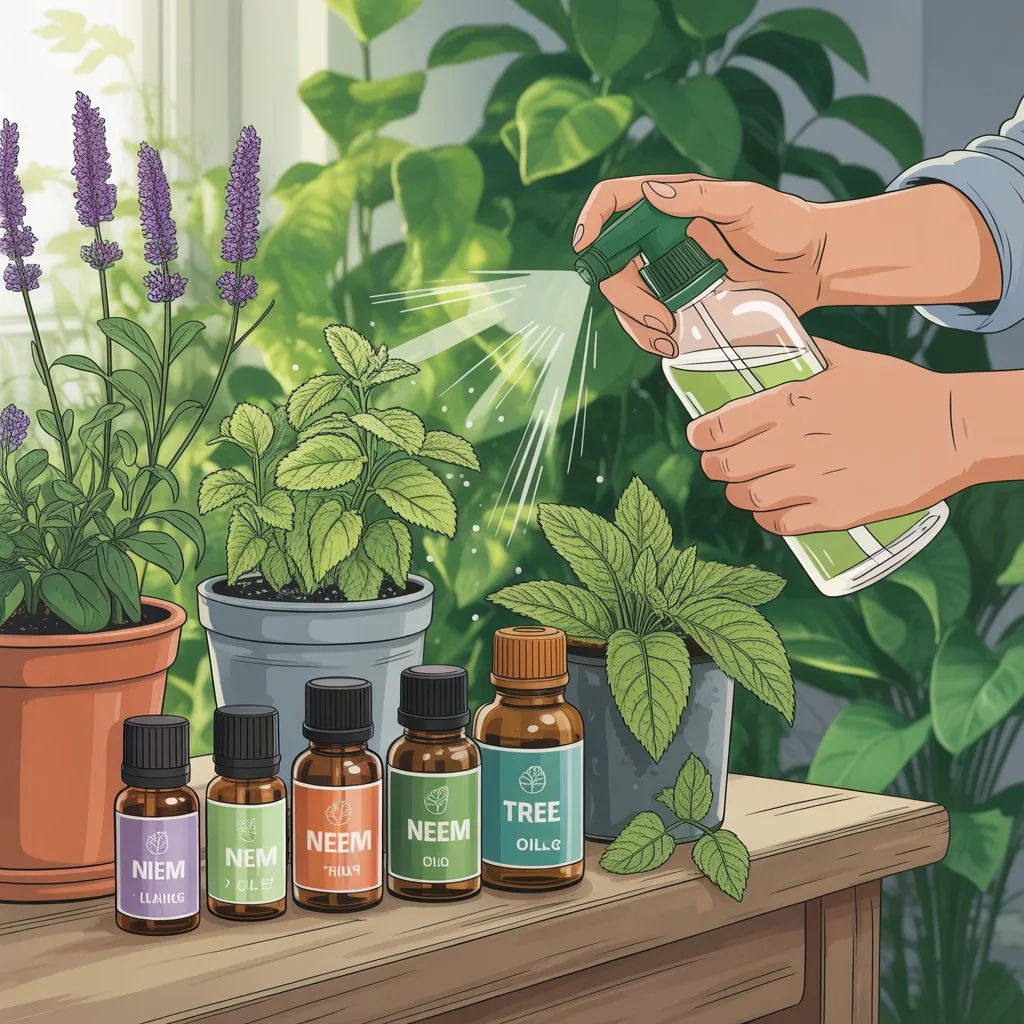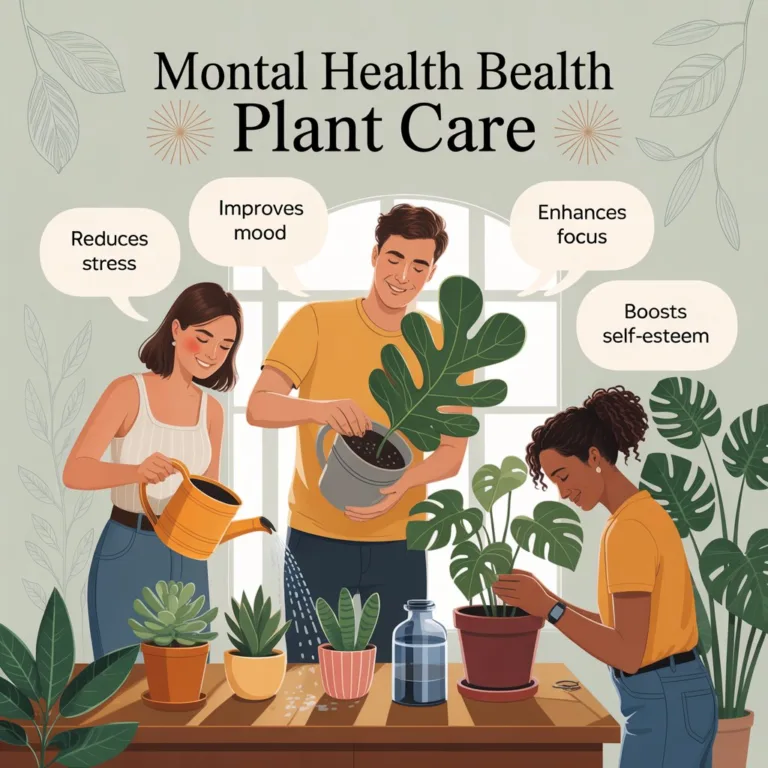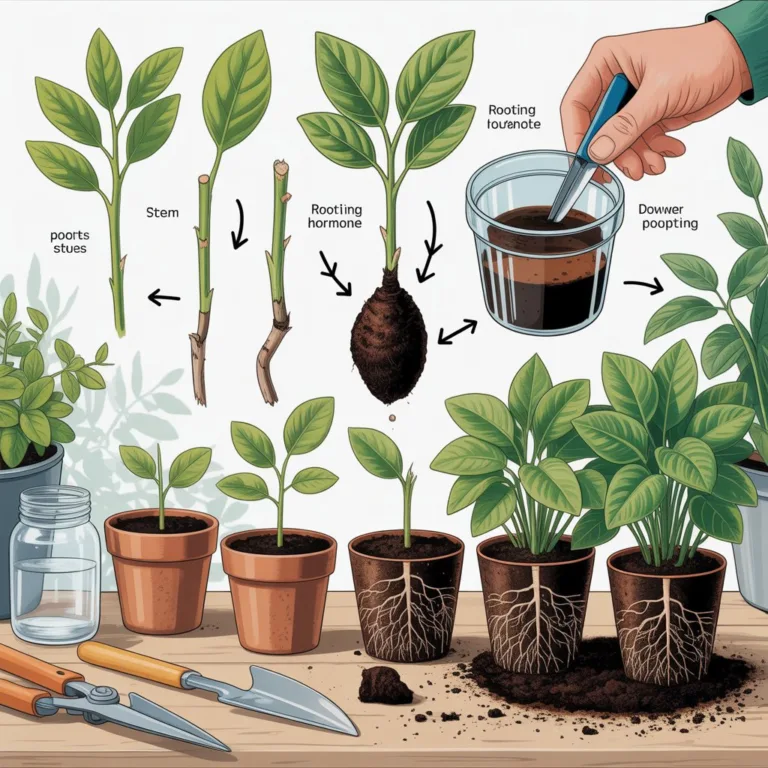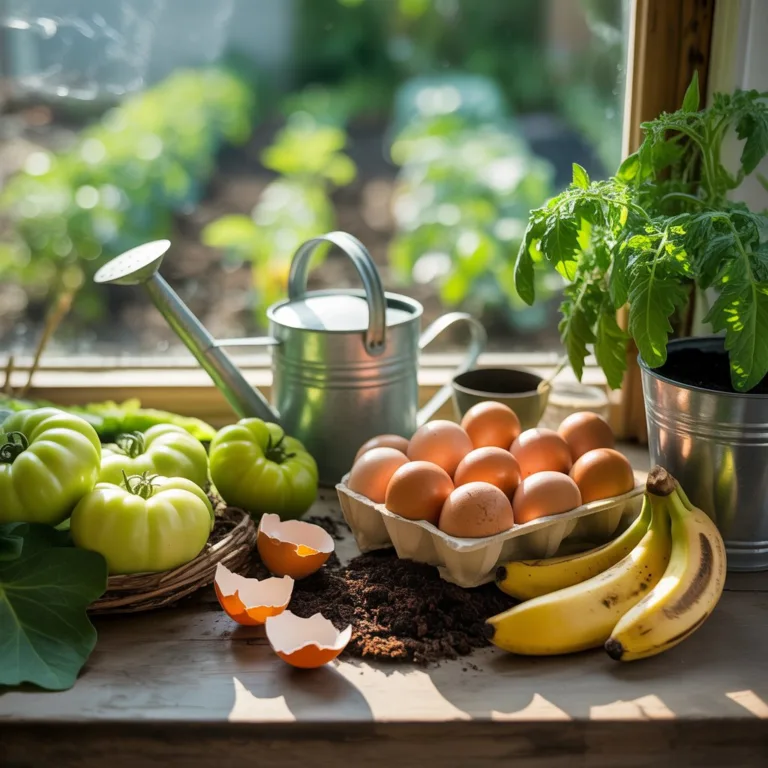Plants, much like humans, thrive when nurtured with care, balance, and natural protection. In recent years, gardeners and eco-conscious growers have turned to essential oils not only for their aromatic properties but also for their potential to enhance plant health. Derived from flowers, leaves, bark, and roots, essential oils hold potent compounds that can support plant growth, deter pests, and prevent diseases — all while maintaining harmony with the environment.

Using essential oils for plant health merges ancient botanical wisdom with modern sustainable practices. Whether you’re tending a small collection of houseplants or cultivating a flourishing garden, essential oils can become a valuable tool in your eco-friendly gardening routine.
Understanding Essential Oils and Their Role in Nature
Essential oils are concentrated plant extracts that capture a plant’s “essence” — its scent, energy, and bioactive compounds. In nature, these oils serve critical roles: repelling insects, attracting pollinators, and protecting plants from fungi and bacteria. When used responsibly, these same properties can be harnessed to benefit other plants.
Each essential oil carries a unique chemical profile that influences its effects. For example, lavender oil is known for its calming scent and antifungal abilities, while peppermint oil acts as a natural pest deterrent. The key to success is understanding how to balance potency with dilution, ensuring that the oils support rather than overwhelm your plants.
Why Choose Essential Oils for Gardening?
Modern gardening often relies on synthetic fertilizers and pesticides that can damage soil health and harm beneficial insects. Essential oils provide a sustainable, non-toxic alternative, supporting both plants and the surrounding ecosystem.
1. Natural Pest Control
Essential oils are effective at repelling unwanted insects without harming bees, butterflies, or ladybugs. Their strong aromas and chemical compounds disrupt pest communication and feeding behaviors, creating an invisible barrier of protection.
2. Antifungal and Antibacterial Properties
Many essential oils contain compounds that inhibit fungal growth or bacterial infections, helping prevent common plant diseases like powdery mildew, root rot, or blight.
3. Environmental Safety
Unlike chemical treatments, essential oils break down naturally and don’t contaminate soil or groundwater. They maintain the ecological balance that’s vital for long-term garden health.
4. Cost-Effective and Customizable
A few drops go a long way. You can adjust concentrations for different plants, experiment with combinations, and reuse mixtures seasonally.
5. Aromatherapy for You and Your Garden
As a bonus, essential oils infuse your garden with fresh, uplifting scents that promote calmness and joy while you work among your plants.
How to Safely Use Essential Oils for Plants
Essential oils are powerful substances — highly concentrated and potent even in small quantities. To use them safely:
- Always dilute essential oils in water or a carrier like neem oil before applying.
- Perform a spot test on a single leaf before widespread use.
- Apply during cooler hours (early morning or late afternoon) to prevent leaf burn.
- Shake sprays before each use, as oils naturally separate from water.
A general guideline is to mix 10–15 drops of essential oil per liter of water for mild sprays, or 20–25 drops for stronger pest deterrents. For sensitive plants, reduce the concentration.
Best Essential Oils for Plant Health
Each oil offers unique benefits. Understanding their properties will help you tailor your blends for specific needs.
Peppermint Oil: The Pest Repeller
Peppermint oil is one of the most effective natural repellents for ants, aphids, and spider mites. Its menthol aroma confuses insects and masks the scent of the plants they target.
Use: Mix 10 drops of peppermint oil with 1 liter of water and a few drops of mild dish soap to help emulsify the mixture. Spray around the base of plants and on leaves weekly.
Lavender Oil: The Fungal Fighter
Lavender oil contains linalool and linalyl acetate — compounds known for antifungal and antibacterial properties. It helps prevent mold, mildew, and root infections.
Use: Add 10 drops to 1 liter of water and apply lightly to foliage prone to fungal growth, such as roses and herbs.
Eucalyptus Oil: The Insect Shield
Eucalyptus oil is excellent for deterring whiteflies, aphids, and beetles. Its sharp scent also discourages mosquitoes from breeding near water sources.
Use: Blend 15 drops with 1 liter of water and spray near affected plants.
Rosemary Oil: The Growth Booster
Rosemary oil stimulates plant growth by improving nutrient absorption and repelling destructive larvae. It’s particularly useful for vegetable gardens and potted plants.
Use: Combine 10 drops with 1 liter of water and spray directly onto leaves and stems once every two weeks.
Tea Tree Oil: The Disease Defender
Tea tree oil’s strong antifungal action combats root rot, powdery mildew, and bacterial blight. It’s potent, so use it sparingly to avoid damaging delicate plants.
Use: Add 5–8 drops to 1 liter of water. Spray only when symptoms appear, not routinely.
Lemongrass Oil: The Stress Reliever
Lemongrass oil strengthens plant resilience against stress caused by heat or transplanting. Its fresh scent also repels fruit flies and gnats.
Use: Mix 10 drops with 1 liter of water and mist lightly over foliage every 10 days.
Creating Custom Essential Oil Blends for the Garden
Blending essential oils can enhance their effectiveness by combining complementary properties.
Here are a few tested blend ideas:
- All-Purpose Garden Spray
- 5 drops peppermint oil
- 5 drops rosemary oil
- 5 drops lavender oil
- 1 liter of water
- Fungal Defense Blend
- 6 drops tea tree oil
- 6 drops eucalyptus oil
- 6 drops lemon oil
- 1 liter of water
- Stress Recovery Mist
- 5 drops lemongrass oil
- 5 drops lavender oil
- 5 drops chamomile oil
- 1 liter of water
Shake well before spraying, and store leftover mixtures in dark glass bottles to preserve potency.
Essential Oils for Soil and Root Care
Essential oils don’t just benefit the leaves — they can also help maintain healthy soil ecosystems. When diluted properly, they can discourage harmful fungi and nematodes while encouraging microbial balance.
A mild solution of tea tree or rosemary oil mixed with water can be poured around the base of plants to deter soil-borne pathogens. Use this treatment occasionally — about once per month — to avoid over-saturation.
Additionally, mixing essential oils with compost teas can enhance their antibacterial properties while enriching the soil naturally.
Using Essential Oils for Seed Germination and Propagation
Certain essential oils can stimulate seed germination and early root growth. Their natural compounds promote enzymatic activity and strengthen resistance to early-stage fungal infections.
For a germination soak, dilute one drop of rosemary or cinnamon oil in 1 liter of water. Soak seeds for a few hours before planting. This method has shown promising results for herbs like basil, parsley, and tomatoes.
During propagation, mist young seedlings with a diluted lavender or peppermint solution to prevent mold and damping-off disease.
Protecting Indoor Plants Naturally
Indoor plants are especially vulnerable to pests like spider mites and fungus gnats. Essential oil sprays provide a non-toxic, aromatic solution that’s safe to use in enclosed spaces.
Use peppermint, lemongrass, or eucalyptus oils diluted in water as a gentle mist. Avoid over-application — a light spray once a week is enough. For fungus gnats, sprinkle cinnamon oil (1 drop per cup of water) on the top layer of soil to discourage larvae.
As an added benefit, the pleasant aroma of essential oils doubles as natural air freshening for your home.
Supporting Pollinators with Essential Oils
Responsible use of essential oils also involves protecting beneficial insects like bees and butterflies. Some oils, when applied directly to flowers, can interfere with pollination. To avoid this, focus application on leaves, stems, and soil rather than blooms.
Interestingly, certain essential oils — such as lavender and clary sage — can help attract pollinators when diffused lightly in garden areas, guiding them to flowering plants.
Balancing pest control with pollinator safety ensures a healthy and productive ecosystem.
Combining Essential Oils with Other Natural Gardening Methods
Essential oils integrate beautifully into broader sustainable gardening practices. You can combine them with:
- Neem oil sprays for enhanced pest resistance.
- Compost tea for microbial nourishment.
- Vinegar and baking soda solutions for disease prevention.
- Mulching to preserve soil moisture and stability.
By pairing essential oils with these natural methods, you build a multi-layered defense system that keeps your garden healthy without harmful chemicals.
The Connection Between Aromatherapy and Gardening
There’s an emotional and sensory dimension to using essential oils in gardening. Their aromas have been linked to stress reduction and improved focus, creating a meditative experience each time you tend to your plants.
Scent can evoke feelings of grounding and calm — qualities that enhance the therapeutic value of gardening itself. Combining these benefits creates a nurturing environment for both plants and people.
A Sustainable Approach to Green Living
Adopting essential oils for plant care reflects a growing awareness of environmental responsibility. It’s about reconnecting with nature’s cycles, understanding plant intelligence, and embracing methods that heal rather than harm.
When gardeners choose natural alternatives, they promote biodiversity, reduce pollution, and strengthen the ecological networks that sustain life. Essential oils, when used respectfully, can be a bridge between ancient botanical traditions and modern sustainable living.
Incorporating them into your routine — from pest control to propagation — transforms ordinary gardening into a conscious act of harmony with nature. Each drop represents both care and connection, nurturing not just your plants, but the planet itself.

Sofia Greenfield is a sustainable gardening expert and environmental educator who inspires families and urban gardeners to cultivate green spaces responsibly. She shares practical tips on growing vegetables, herbs, and flowers using eco-friendly and recycled materials, emphasizing the joy of gardening while protecting the planet.



